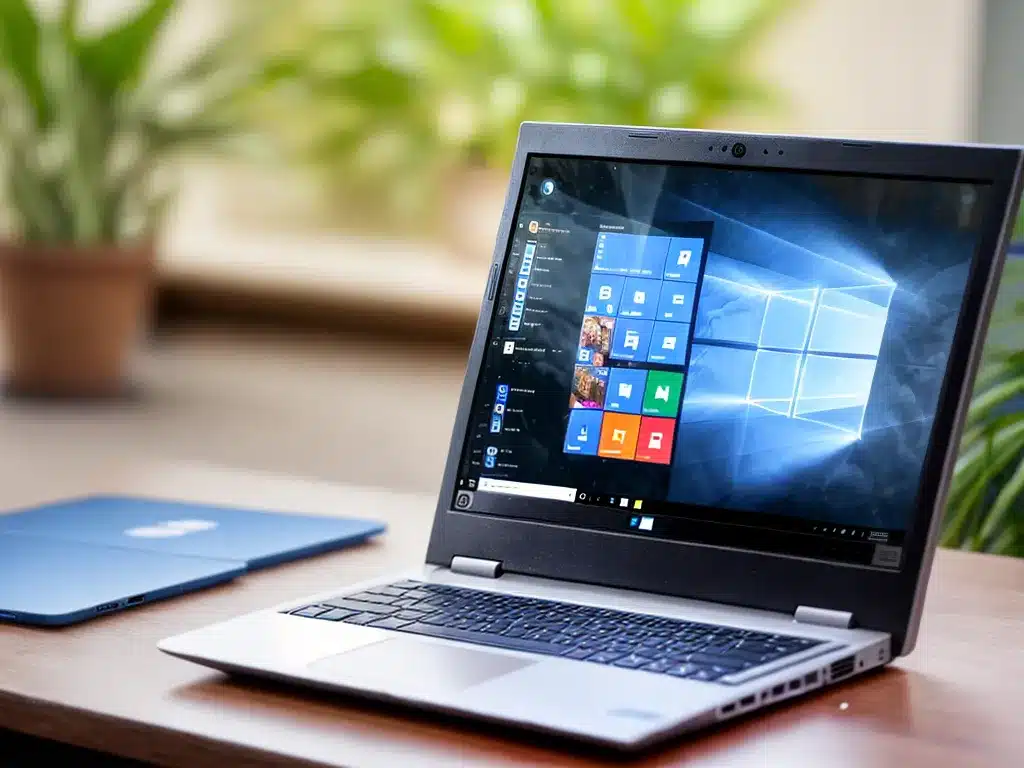Why Your Laptop Feels Slow
As a Windows laptop ages, it can start to feel slow, unresponsive, and generally frustrating to use. There are a few key reasons why this happens:
- Hardware degradation – Over time, components like the hard drive, RAM, and CPU can degrade, resulting in slower performance. This is an unavoidable side effect of aging hardware.
- Software bloat – Newer versions of Windows and applications require more system resources. As you update your laptop’s software over the years, it has to work harder to run everything.
- Cluttered storage – Saving files, downloads, and programs over time fills up your storage with unnecessary clutter, making it work harder to access data.
- Fragmented hard drive – As files get saved, deleted, and rewritten over time, they can become fragmented across your hard drive, taking longer to access.
While you can’t stop the aging process, there are many tactics you can use to maximize an old laptop’s limited resources and help it feel speedier.
Clean Up and Organize Your Hard Drive
One of the best things you can do is clean up and organize your laptop’s hard drive. Here are some tips:
- Uninstall unneeded programs – Open “Programs and Features” in the Control Panel and uninstall programs you no longer use. Be careful not to remove anything important.
- Delete temporary files – Temporary files from your browser, downloads folder, and other locations can build up over time. Safely delete them.
- Remove duplicate files – Use the built-in Windows tool or a third party app to find and delete duplicate files and photos.
- Organize your files – Keep your downloads, documents, photos, and other files neatly organized so it’s easier for your laptop to find them.
- Clean up your downloads folder – Empty your downloads folder and set your browser to stop automatically saving files there.
Cleaning up clutter gives your laptop’s hardware less work sifting through files and more resources to devote to actual tasks.
Use System Maintenance Tools
Windows includes some handy built-in tools to help keep your laptop optimized. Make sure to use them on a regular basis:
- Disk Cleanup – Cleans up temporary files, empties the recycle bin, and frees up disk space.
- Disk Defragmenter – Defragments and optimizes the files on your hard drive for faster access.
- Check Disk – Scans your hard drive for errors and recovers readable information from bad sectors.
Running these tools monthly or bi-monthly helps undo some of the fragmentation and clutter that build up over time from everyday laptop use.
Adjust Visual Effects
Windows includes lots of visual effects like animations, transparencies, and other graphics that look nice but use up processing power. Try adjusting these effects:
- Open “Performance Options” in the Control Panel
- Click “Adjust for best performance” to disable unnecessary visual effects
- Or, manually disable individual eye candy in the “Visual Effects” tab
You can also try adjusting advanced performance options like thumbnail cache size if you want maximum speed.
Add More RAM
One of the best upgrades you can make to an old laptop is swapping in new RAM. More RAM allows your laptop to work on more tasks at once without having to use sluggish virtual memory.
- Check how many RAM slots you have and how much are in use
- Buy new compatible RAM sticks up to your laptop’s maximum capacity
- Install the new RAM by opening up the case and swapping sticks
Even just going from 2GB to 4GB of RAM can provide a noticeable boost in performance for multitasking and using modern software.
Perform Regular Maintenance
It’s important to perform regular maintenance on an aging laptop to keep it running as well as possible:
- Update Windows – Be sure to install the latest Windows updates to get performance improvements.
- Update drivers – Update outdated drivers, especially your graphics and wireless drivers.
- Shutdown and restart regularly – Don’t just sleep your laptop – shutting down gives the OS a clean slate.
- Check battery health – Consider replacing an old battery if it can’t hold a charge.
- Clean out vents – Use compressed air to clean dust buildup from intake and exhaust vents.
- Clean and optimize – Periodically run cleaning tools like Disk Cleanup and Defragmenter.
Well-maintained laptop hardware and software equals better performance.
Summary
The slowdown of an old Windows laptop can be frustrating, but is mostly unavoidable. Focus on cleanup, maintenance, upgrades, and optimizing settings to squeeze the most performance possible out of aging laptop hardware. With smart optimizations, you can extend the usable lifespan of a laptop by years.













